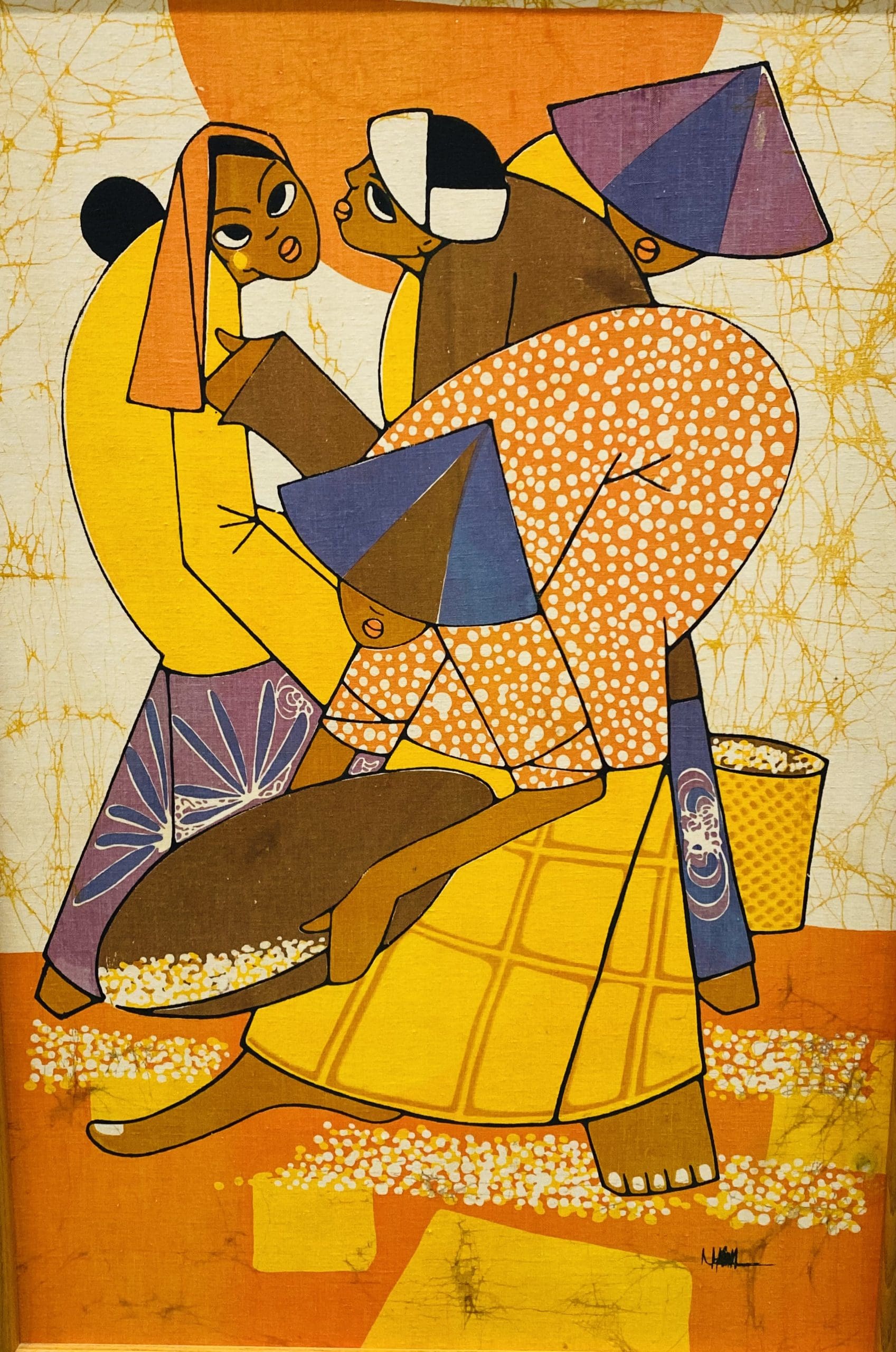Asian Batik Art
Asian Batik Art
Asian Batik Art is a vibrant and culturally rich traditional art form, widely practiced across Southeast Asia. This method is most often the work of women and frequently portrays scenes of women at work, participating in community events, and engaging in religious customs.
The Batik Process
Batik art involves a unique process in which artists apply wax to sections of fabric before dyeing it. The waxed areas resist the dye, creating negative space once the wax is removed. This careful technique results in textiles with detailed, contrasting designs that capture both the artistry and traditions of the region.
Cultural Significance
Batik pieces serve as visual records of daily life, and many works act as “cultural snapshots” that highlight village traditions and the importance of women’s roles within them. Modern batiks often depict scenes such as rice processing, female gatherings, and other aspects of provincial life, providing valuable insight into the community’s values and customs.
Example
A typical mid-20th century Southeast Asian batik might illustrate the rice-processing activities of village women, capturing the spirit of collaboration, ritual, and social connection felt within these rural settings.
Asian Batik Art remains popular today, celebrated for its color, narrative power, and its ability to connect viewers with the everyday experiences and heritage of Asian communities.

Leave a Reply
You must be logged in to post a comment.